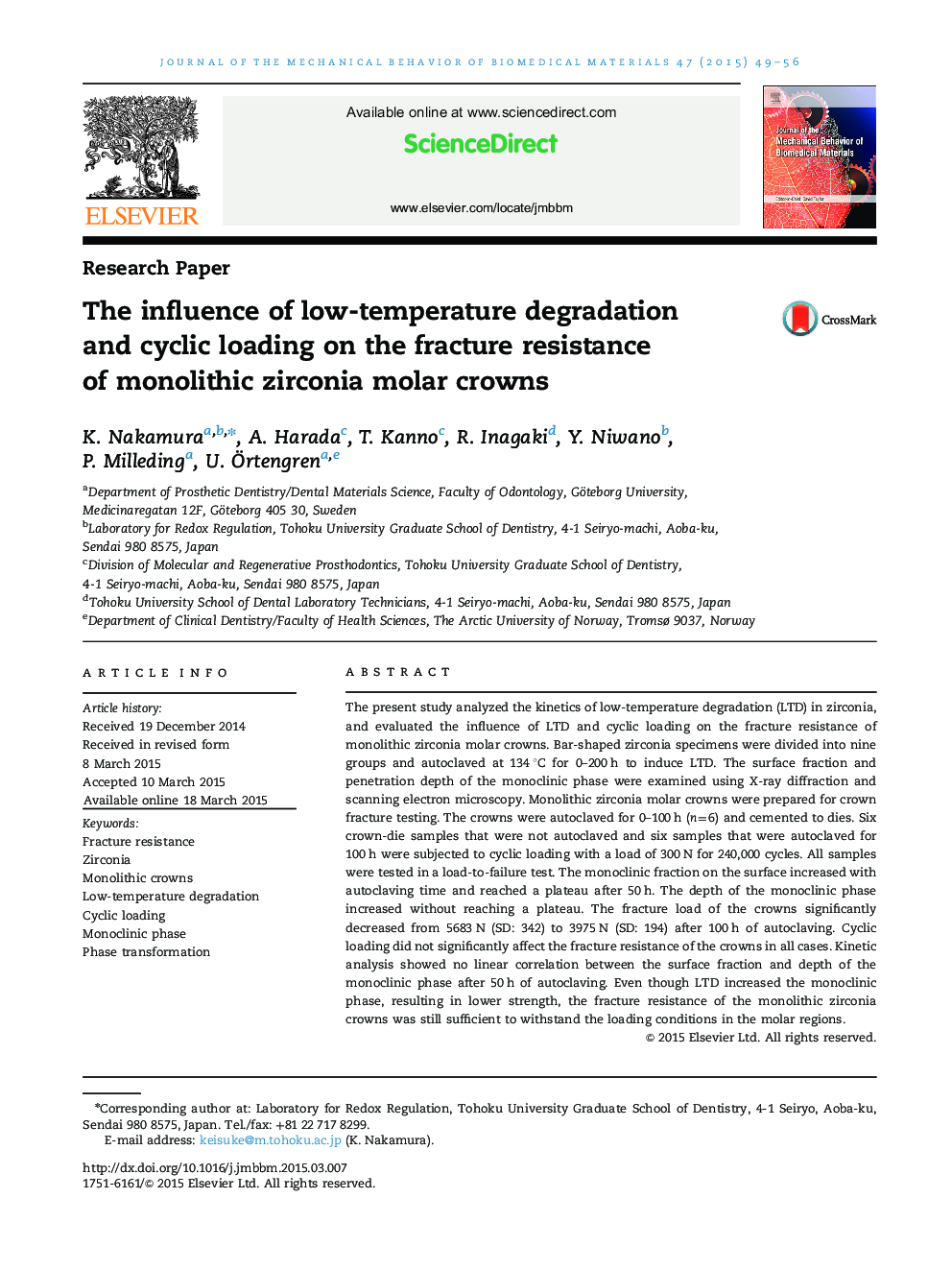| کد مقاله | کد نشریه | سال انتشار | مقاله انگلیسی | نسخه تمام متن |
|---|---|---|---|---|
| 810680 | 1469098 | 2015 | 8 صفحه PDF | دانلود رایگان |
• The monoclinic fraction on the zirconia surface increased with autoclaving time.
• The monoclinic fraction reached plateau after 50 h of autoclaving.
• The penetration depth of the monoclinic phase increased without reaching a plateau.
• Autoclaving decreased the fracture resistance of the monolithic zirconia crowns.
• Cyclic loading did not affect the fracture resistance of monolithic zirconia crowns.
The present study analyzed the kinetics of low-temperature degradation (LTD) in zirconia, and evaluated the influence of LTD and cyclic loading on the fracture resistance of monolithic zirconia molar crowns. Bar-shaped zirconia specimens were divided into nine groups and autoclaved at 134 °C for 0–200 h to induce LTD. The surface fraction and penetration depth of the monoclinic phase were examined using X-ray diffraction and scanning electron microscopy. Monolithic zirconia molar crowns were prepared for crown fracture testing. The crowns were autoclaved for 0–100 h (n=6) and cemented to dies. Six crown-die samples that were not autoclaved and six samples that were autoclaved for 100 h were subjected to cyclic loading with a load of 300 N for 240,000 cycles. All samples were tested in a load-to-failure test. The monoclinic fraction on the surface increased with autoclaving time and reached a plateau after 50 h. The depth of the monoclinic phase increased without reaching a plateau. The fracture load of the crowns significantly decreased from 5683 N (SD: 342) to 3975 N (SD: 194) after 100 h of autoclaving. Cyclic loading did not significantly affect the fracture resistance of the crowns in all cases. Kinetic analysis showed no linear correlation between the surface fraction and depth of the monoclinic phase after 50 h of autoclaving. Even though LTD increased the monoclinic phase, resulting in lower strength, the fracture resistance of the monolithic zirconia crowns was still sufficient to withstand the loading conditions in the molar regions.
Figure optionsDownload high-quality image (249 K)Download as PowerPoint slide
Journal: Journal of the Mechanical Behavior of Biomedical Materials - Volume 47, July 2015, Pages 49–56
